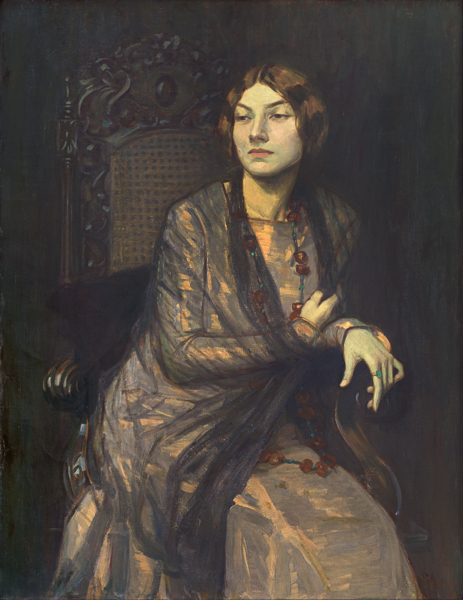

Provenance
21/12/1978 purchase by the Academy of the Arts, Berlin (West), from Galerie Cap Antik at Hotel Continental, Berlin
Painter Julie Wolfthorn was born in 1864 as Julie Wolf in Thorn (now: Toruń/Poland) into a Jewish family. In 1883, she moved to Berlin and later lived in an apartment with an adjoining studio at Kurfürstenstraße 50, which she initially shared with her older sister Luise and later, due to the forced relocation of Jewish citizens in Berlin, with Erich Hirschweh, his ex-wife Margarete (née Edel) and their son Peter Edel (born Hirschweh).
Wolfthorn was an important member of the women's movement in Berlin and was involved in founding the Berlin Secession in 1898 and the Verein der Künstlerinnen und Kunstfreunde Berlin (Association of artists and art lovers in Berlin). From 1906, she was listed as a member of the Deutscher Künstlerbund (Association of German Artists). In the same year, she also founded the exhibition cooperation Verbindung Bildender Künstlerinnen (Society of Women Visual Artists) with Käthe Kollwitz. She is admired in particular for her portraits. The Image of the actor Kete Parsenow was created in about 1910.
During the Second World War, Wolfthorn continued to stay in Berlin but, because of her Jewish heritage and the associated repression by the National Socialist regime, could only exhibit at the Kulturbund Deutscher Juden (Cultural Federation of German Jews) – until its activities were declared illegal in 1941. On 28 October 1942, 78-year-old Julie Wolfthorn and her sister Luise Wolf were deported to the concentration camp in Theresienstadt, where Julie died two years later. Before she was deported, she had to declare her assets but she did not list any artworks. Her apartment was seized in May 1943 by the Vermögensverwertungsstelle (Asset Reclamation Office). But what happened to her works there? Had she managed to store her pictures in the cellar or give them to friends, or did they stay in the possession of the family? Were they confiscated or perhaps even destroyed? And where was the portrait of Kete Parsenow at that time?
Margarethe Edel, the mother of Peter Edel, lived in the apartment at Kurfürstenstraße 50 for an extended period of time, but there is now no further reference to Julie Wolfthorn's lost works in the Peter Edel Archive at the Akademie der Künste.
Could the portrait possibly have been in the possession of the subject? Kete Parsenow, who was born in 1880 in Stettin and died in 1960 in Tübingen, worked as an actor, among others, under Max Reinhardt in Berlin. She moved in Berlin's artistic circles and knew Karl Kraus and Else Lasker-Schüler. After the war, she wrote to director Julius Bab, co-founder of the Jüdischer Kulturbund (Cultural Foundation of German Jews) that she had lost "everything I owned" during the National Socialist era.
The painting could not be found in exhibition and auction catalogues before 1945 nor in the relevant provenance research databases.
Strangely enough, the painting was long believed to be a portrait of Parsenow's famous actor colleague Tilla Durieux. The Academy of the Arts (West) bought the painting in December 1978 from Galerie Cap Antik to add to its Durieux Archive. The error was only uncovered in 2010 when a newspaper clipping dating from 1916 showing the picture and title was rediscovered.
The investigations are ongoing.